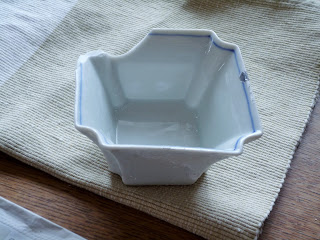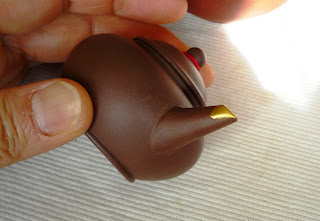First I broke a small plate, then put it together again.
Normally I would finish it by drawing lacquer lines and spray gold powder on them. But this time I repaired it with maki-e.
Watching the joint lines for a while, I thought of painting a stick bug, though generally plants are painted such as bamboo or vines.
Maki-e nicely conseals the joint lines as if there were no seam !


















































